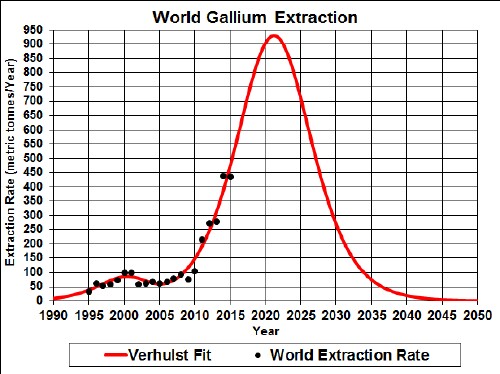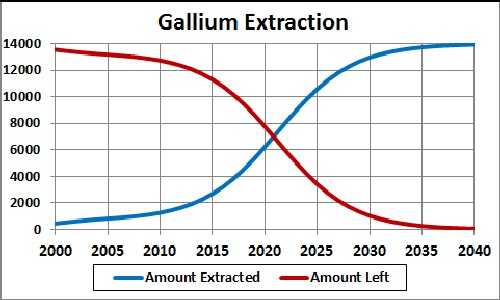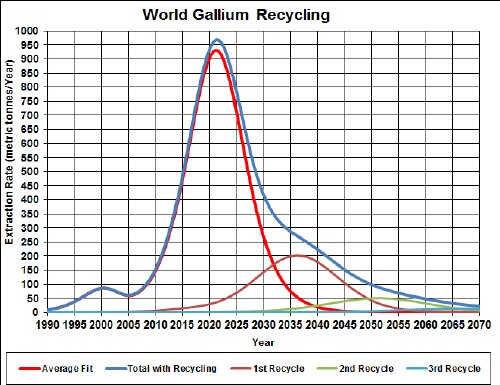
Cadmium extraction rate for the world and two Verhulst functions fits to the data.
L. David Roper
http://www.roperld.com/personal/RoperLDavid.htm
2 July, 2016
Cadmium is used in electronics. The graph below shows the gallium extraction data for the world and Verhulst function fits to the data in order to extrapolate into the future.

Cadmium extraction rate for the world and two Verhulst functions fits to the data.
The red curve is obtained by restricting the total extraction to the amount already extracted plus the estimated reserve of 14 x103 tonnes.
It appears that the recent rapid rise in extraction rate is unsustainable for more that a decade from now.
Taking an average extraction curve of the two fits, the crossover point at year ~2021 when the amount extracted is equal to the amount left to be extracted is shown here:

Assume that:
The effective cadmium available for making items after the first ten recycling cycles is shown in the following graph, along with the effective cadmium available for each cycle:

The equation for a recyling cycle is
 ,
,
where Ei is the amount available from the previous cycle. Here is an example of the Excel coding:
{=(($J$2+$I$2)/2+(($J$2-$I$2)/2)*TANH((A27-$K$2)/$L$2))*SUM($I$27:I27*(EXP(-1*((A27-$A$27:A27-$N$2)/$O$2)^2/2))/$O$2/SQRT(2*PI()))} (The curly bracket surrounding the term makes it into an array; it must be entered by holding down the SHIFT & CTRL keys while pressing the ENTER key.)
Thus, under the assumptions given above, the effective amount of cadmium available for making items peaks at about year 2000 and falls off rapidly after that. Humans will have taken concentrated cadmium deposits and scattered them across the surface of the earth.
The Excel spreadsheet is set up to make it easy to calculate with different recycling assumptions.